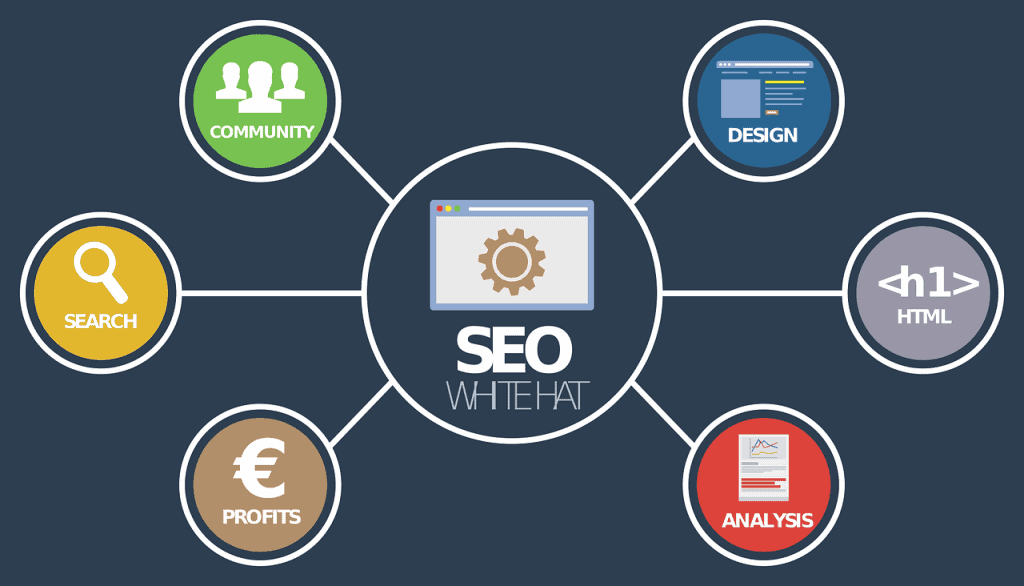When it comes to tackling technical SEO issues like site speed, mobile-friendliness, and crawlability, there are a few key steps you can take to ensure your website is optimized and performing at its best.
First, consider conducting a thorough audit of your site to identify any areas that may be causing slow loading times or compatibility issues on mobile devices. From there, you can implement changes such as optimizing images and code, leveraging caching techniques, and utilizing responsive design to improve both speed and mobile-friendliness. Additionally, ensuring your site is easily crawlable by search engines is essential for effective SEO.
This can be achieved through practices such as organizing your site’s structure, creating an XML sitemap, and utilizing robots.txt files. By implementing these strategies and regularly monitoring your site’s performance, you’ll be on the path to resolving technical SEO issues and improving your website’s overall visibility and user experience.

Learn more about SEO from our Blog
Site Speed
Importance of site speed
Site speed plays a crucial role in the success of your website. In today’s fast-paced digital world, users expect websites to load quickly and provide a seamless browsing experience. If your site takes ages to load, visitors are likely to become frustrated and abandon your website, turning to your competitors instead. Moreover, slow website speed can also negatively impact your search engine rankings, as search engines like Google consider site speed as one of the ranking factors. Therefore, it is essential to prioritize optimizing your site’s speed to enhance user experience and improve your search engine visibility.
Tools to measure site speed
To measure and evaluate your site’s speed, several tools are available that provide valuable insights. One of the most popular tools is Google’s PageSpeed Insights. This tool analyzes the performance of your website on both mobile and desktop devices and provides recommendations for improvement. Another useful tool is GTmetrix, which offers detailed reports with PageSpeed and YSlow scores, along with suggestions to enhance your site’s speed. Additionally, Pingdom and WebPageTest are also highly regarded tools that provide comprehensive speed analysis and performance optimization suggestions.
Common causes of slow site speed
Multiple factors can contribute to slow site speed. One common cause is bloated code, which includes excessive HTML, CSS, and JavaScript files that haven’t been optimized. Each of these files requires additional time to load, leading to slower overall speed. Additionally, unoptimized images and large file sizes can significantly impact site speed. Forgetting to compress images or using high-resolution images when smaller versions would suffice can result in slow loading times. Poor server performance, including slow response times or inadequate hosting resources, can also be a major cause of slow site speed.
Strategies to improve site speed
Improving site speed requires a combination of various strategies and optimizations. One crucial step is to leverage browser caching, which allows users to store certain elements of your website on their devices, reducing the need to download them repeatedly. Compressing and minifying your code, such as JavaScript and CSS, can also significantly improve load times by reducing the file sizes. Optimizing your images by compressing them and using the appropriate file formats can further enhance site speed. Another effective strategy is implementing content delivery networks (CDNs), which distribute your website’s data across multiple servers worldwide, reducing the distance between the user and the server and improving load times.
Mobile-friendliness
Significance of mobile-friendliness
In today’s mobile-dominated world, having a mobile-friendly website is no longer an option but a necessity. With the increasing number of users accessing the internet through mobile devices, it is crucial to ensure that your website is optimized for mobile viewing. A mobile-friendly website provides a seamless user experience, allowing visitors to easily navigate, read content, and interact with your site on their smartphones or tablets. Furthermore, Google now uses mobile-friendliness as a ranking factor, so having a mobile-friendly website is essential for improving your search engine visibility and attracting organic traffic.
Mobile-friendly testing tools
To ensure that your website is mobile-friendly, there are several testing tools available to evaluate its mobile performance. Google’s Mobile-Friendly Test is a reliable tool that assesses how well your website conforms to mobile-friendly standards. It provides a detailed report highlighting any issues or areas of improvement. Another valuable tool is BrowserStack, which allows you to test your website on various mobile devices and screen sizes, ensuring a consistent experience across different platforms. Additionally, you can also use Responsinator, which provides a snapshot of how your website appears on different devices.
Optimizing for mobile devices
Optimizing your website for mobile devices involves various considerations. One crucial aspect is responsive web design, which ensures that your website adapts to different screen sizes and orientations, providing an optimal viewing experience on any device. Implementing responsive design frameworks like Bootstrap or Foundation can simplify the process. Additionally, prioritizing mobile-friendly features and functionality is essential. This includes using large, legible fonts, ensuring easily clickable buttons and links, and avoiding the use of Flash, which is not supported on many mobile devices. Optimizing your website’s loading speed, as discussed earlier, is equally important for mobile-friendly browsing.
Responsive design considerations
When designing and developing a responsive website, there are several key considerations to keep in mind. One important factor is the content hierarchy and layout. By strategically organizing your content, you can ensure it remains readable and accessible across all screen sizes. Ensuring that images and other media elements are properly scaled and optimized for different devices is also necessary. Additionally, considering touch-friendly navigation is crucial for mobile users. Implementing collapsible menus or sticky headers can improve usability and enhance the overall mobile experience. Regularly testing your website across multiple devices and screen sizes is essential to identify and address any potential issues or inconsistencies.

Crawlability
Understanding crawlability
Crawlability refers to how effectively search engine crawlers or bots can access and navigate your website’s content. When search engines crawl your website, they analyze its pages, index the relevant information, and determine the website’s ranking in search engine results pages (SERPs). If your website is not crawlable, search engines may have difficulty indexing and understanding your content, negatively impacting your organic visibility.
Crawl budget and indexation
Crawl budget refers to the number of pages search engines are willing to crawl and index on your website within a given time frame. Search engines allocate a specific budget to each website based on its authority, relevance, and overall health. It is essential to optimize your website’s crawlability to ensure search engines spend their crawl budget on your valuable pages. This involves prioritizing important pages, minimizing duplicate content, and managing URL structures effectively to avoid unnecessary crawling and maximize indexation.
Factors impacting crawlability
Several factors can influence the crawlability of your website. One crucial element is the website’s internal linking structure. Properly interlinking your website’s pages helps search engine crawlers navigate through your content and discover new pages efficiently. On the other hand, broken links or orphaned pages can hinder crawlers’ ability to access your entire site. Additionally, ensuring that your website has a sitemap.xml file and a robots.txt file can provide instructions to search engine crawlers and help them understand your site’s structure. The speed and performance of your website also play a role in crawlability, as slow-loading pages can cause search engine crawlers to abandon their crawl attempts.
Optimizing crawlability
Optimizing crawlability involves various techniques and best practices. Creating a clear and logical website structure with organized categories and hierarchies allows search engine crawlers to navigate your site more easily. Implementing breadcrumb navigation can also enhance crawlability and provide users with convenient navigation options. Regularly monitoring and fixing broken links or outdated URLs is crucial for maintaining crawlability. In addition, optimizing your website’s speed and performance, as discussed earlier, not only improves user experience but also helps search engine crawlers crawl and index your pages more effectively. Regularly submitting updated XML sitemaps and utilizing crawler tools like Google Search Console can provide valuable insights into any crawl issues and assist in optimizing your website’s crawlability.









